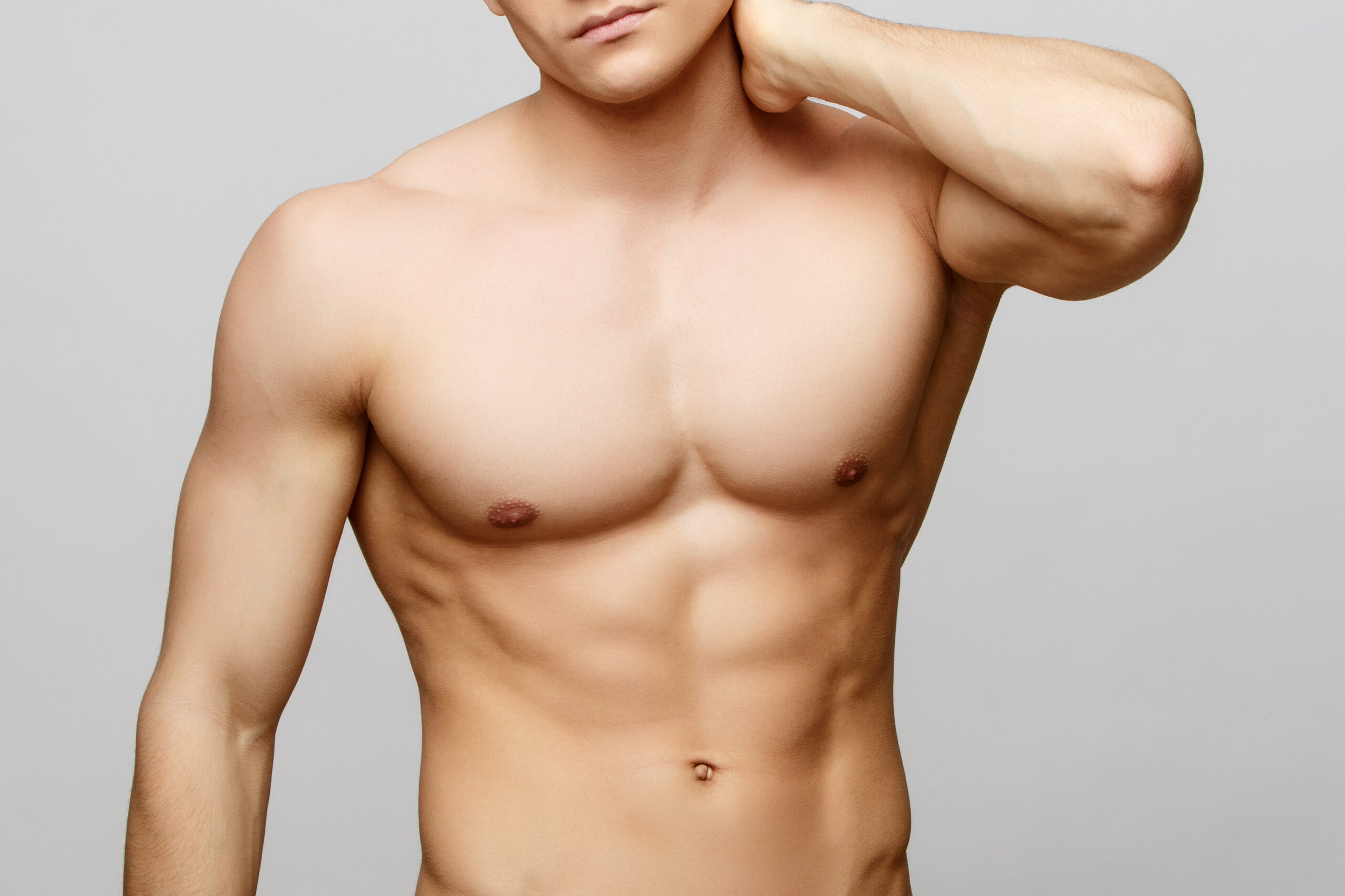Correction of gynecomastia
Enlarged breasts in men are called gynecomastia. A distinction is made between “true” gynecomastia, in which a mammary gland is present, and “false” gynecomastia, in which there is only an increase in fatty tissue. Both forms are often present in combination. Those affected usually suffer greatly from the appearance of their breasts, which cannot be changed by exercise or a balanced diet.
During puberty, many young men develop so-called puberty-related gynecomastia, which disappears on its own without treatment and does not require surgery. In adulthood, gynecomastia can have different causes. In addition to changes in the hormonal balance, tumors can also cause gynecomastia. The cause must therefore be clarified before the operation and another underlying disease ruled out.
Frequently asked questions:
- What preliminary examinations are necessary for gynecomastia?
- How does gynecomastia treatment work?
- What to expect after gynecomastia?
- Further questions about gynecomastia?
- What do I need to consider before and after the operation?
What preliminary examinations are necessary for gynecomastia?
In order to be able to make a clear diagnosis, we need the results of a recent mammogram and a mammosonogram at the first consultation. To ensure that the gynecomastia is not hormonal, blood levels of female and male sex hormones are determined. Depending on this, an examination by a urologist will take place in some cases.
How does gynecomastia surgery work?
In an initial personal consultation, we discuss the individual findings with our patients and explain the various treatment options. We use mammography and sonography to determine the type of gynecomastia and how it can be corrected.
If a suspicious mammary gland is present, it should be removed. In some cases, health insurance covers the treatment costs for this part of the operation. The operation to remove the mammary glands is called a “subcutaneous mastectomy”. The mammary gland tissue is removed via an incision at the edge of the areola. It is sent to a pathologist for a histological examination to make sure that there are no malignant changes. Behind the nipple itself, a layer of tissue approx. 1 to 2 cm thick must be left to prevent the nipple from sticking to the pectoral muscle. If there is too much fatty tissue in the surrounding skin envelope, liposuction is recommended to prevent unsightly dimpling in the area of the removed breast tissue. In some cases, a drain is inserted into the surgical cavity to prevent the accumulation of blood or tissue fluid.
In the case of false gynecomastia, only liposuction is performed. In the case of mixed gynecomastia, subcutaneous mastectomy and liposuction are combined.
At the end of the operation, a compression gown is put on to allow the breast to heal properly and prevent possible secondary bleeding.
What to expect after gynecomastia?
Depending on the extent of the correction, the patient’s age and overall state of health, treatment is possible on an outpatient or inpatient basis. In most cases, only minor pain occurs, which can be easily treated with mild painkillers. The compression shirt is worn day and night for six weeks. This allows the wounds to heal in the optimum form. No sport should be done for 6 weeks after the operation in order not to jeopardize optimal wound healing and scar formation. The stitches are removed after two weeks. At this point, the wounds are completely healed and we provide our patients with special scar creams that can be applied as required. After about six months, the scars have faded and are usually no longer visible.
Do you have further questions about gynecomastia?
If you have any further questions, please arrange a personal consultation at our practice in Cham.
Brief information
| OP duration: | 30 to 60 minutes |
| Stay: | Outpatient or inpatient 1 night |
| Stitching: | 14 to 20 days |
| Socially acceptable: | immediately |
| Downtime: | 1 to 3 days |
Dr. med. Dorrit Winterholer
Specialist in plastic, aesthetic and reconstructive facial and breast surgery.
- Over 20 years of experience as a surgeon.
- Over 12 years of experience as a specialist in plastic and aesthetic medicine.
- Senior Consultant Plastic Surgery Lucerne since 2021.

Get in touch with us!
Make a no-obligation appointment to find out how Dr. Winterholer can help you.

